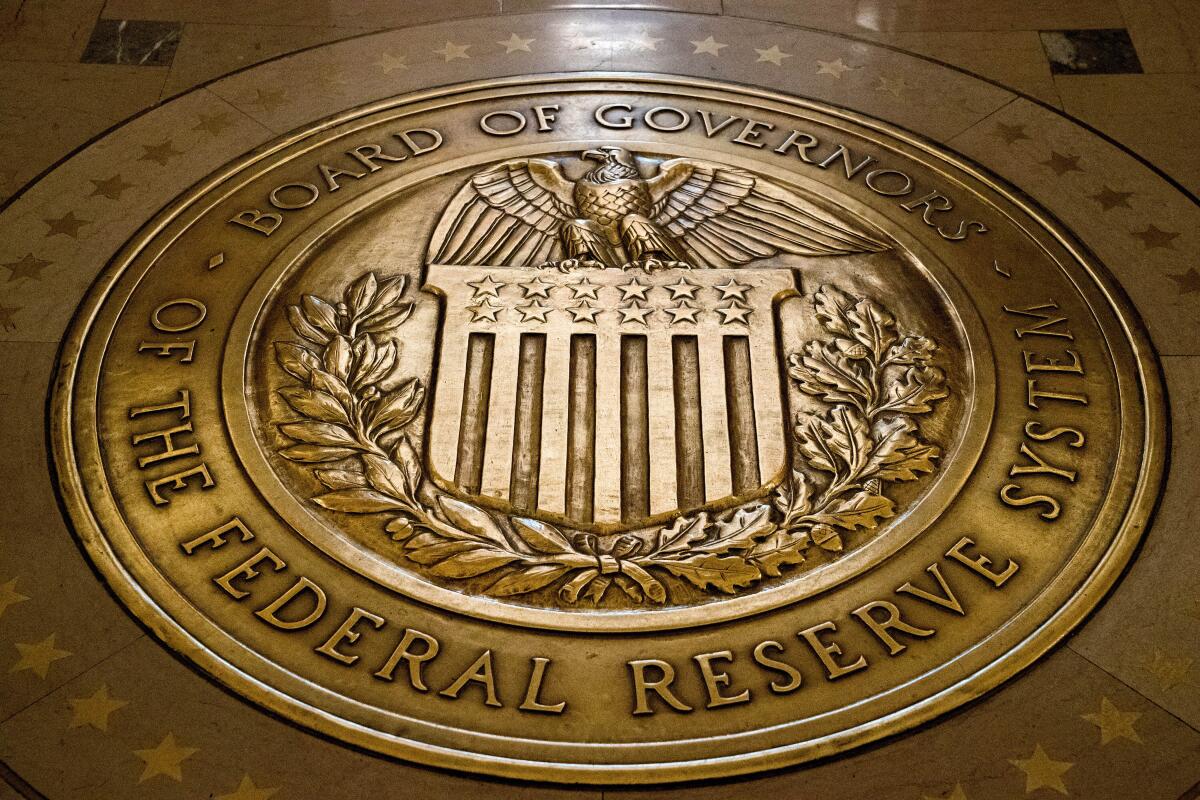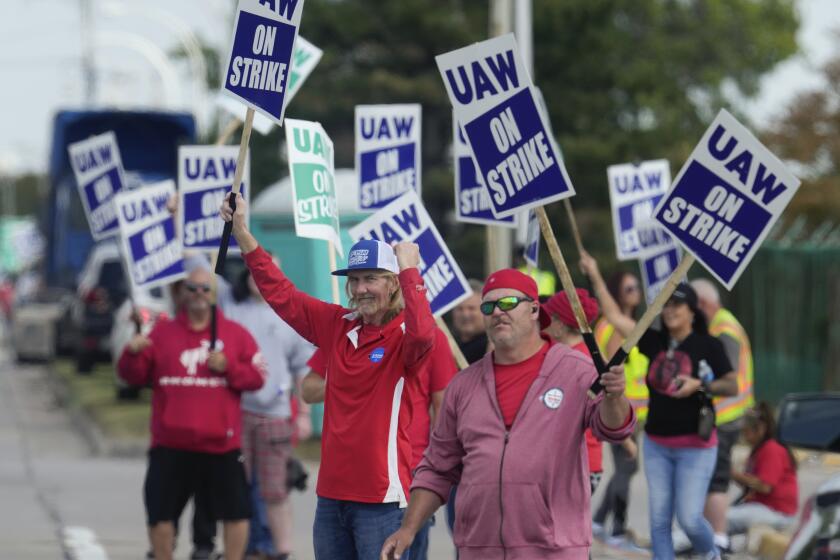Wall Street slips ahead of Fed decision on rates

- Share via
U.S. stocks edged lower and yields climbed Tuesday as Wall Street waits for the Federal Reserve’s latest decision on interest rates.
The Standard & Poor’s 500 index slipped 9.58 points, or 0.2%, to 4,443.95. The Dow Jones industrial average dropped 106.57 points, or 0.3%, to 34,517.73, and the Nasdaq composite lost 32.05 points, or 0.2%, to 13,678.19.
Stocks have been seesawing for weeks on uncertainty about whether the Fed is done with its market-shaking hikes to interest rates. By pulling its main interest rate to the highest level in more than two decades, the Fed has helped inflation to cool from its peak last year but at the cost of hurting prices for investments and damaging some corners of the economy.
The Fed began its latest meeting on interest rates Tuesday, with an announcement scheduled for Wednesday. The overwhelming expectation is for the Fed to announce no change to rates. More focus will be on updated projections Fed officials give for where they see rates heading in coming years.
The continued strength of the U.S. economy could require further interest rate increases, Federal Reserve Chair Jerome Powell said in a closely watched speech that also highlighted the uncertain nature of the economic outlook.
Traders are split on whether the Fed may raise rates one more time this year, but they’re largely expecting the Fed to begin cutting rates next year. Such cuts can act like steroids for financial markets, giving a lift to all kinds of investments.
Optimists say inflation has come down enough for the Fed to cut rates next year, while the economy continues to hum due to a solid job market. Pessimists say the Fed may need to keep rates higher for longer than investors expect to get inflation down to its 2% target, while the threat of a recession still looms.
A soft landing, where inflation gets back to the Fed’s target without the economy having to suffer a painful recession, “is still possible, but not probable in our view,” according to Joe Davis, chief global economist and head of Vanguard’s investment strategy group.
A risk remains that the Fed could misread a temporary slowdown in inflation as having accomplished its mission, which could see a repeat of the late 1960s in which inflation reaccelerates, leading the Fed to hike rates again and a recession to eventually hit.
High rates have already hit the manufacturing and housing industries. A report Tuesday showed that home builders broke ground on fewer new homes in August than economists expected. The 11.3% drop from July’s level was much worse than the 0.8% forecast. But activity for building permits, an indicator for future activity, rose more than expected.
The Solar Futures House was quickly raised using 3-D printing technology and is highly efficient. It recycles water and is powered entirely by the sun’s rays.
On Wall Street, shares of Instacart climbed 12.3% in their first day of trading. The company raised $660 million, which priced the stock at $30 per share.
It arrived on the heels of another highly anticipated initial public offering of stock by Arm Holdings. The offerings could mark a warming environment for IPOs, which fell off sharply after stocks tumbled last year with worries about higher interest rates. Arm jumped in its first day of trading Thursday but has since followed that with three days of losses.
Walt Disney Co. fell 3.6% for one of the largest losses in the S&P 500 after it announced a big investment plan for its theme parks and cruise lines. It plans to double its investment in its parks, experiences and products business to $60 billion over the next 10 years versus the prior decade.
Shares of AutoZone slipped 1.9% despite the auto parts retailer reporting stronger profit for the latest quarter than analysts expected. It said growth in its domestic commercial business was weaker than expected.
On the winning side of Wall Street was U.S. Steel, which rose 3.7% after it said it expects to deliver strong results for the summer, above what analysts were expecting. That’s even with the effect on steel demand expected because of the limited strike by United Auto Workers against Detroit’s Big 3 automakers.
The auto workers’ strike against Detroit’s Big Three will enter its fifth day on Tuesday.
Ford and General Motors were holding steadier after falling a day earlier, as the strike against them continues. The leader of the UAW said late Wednesday its limited strike could expand unless “serious progress” toward a new labor deal is made by Friday at noon. Ford rose 1.8%, and GM rose 1.9%.
In the bond market, the yield on the 10-year Treasury rose to 4.36% from 4.30% late Monday. It’s near its highest level since 2007.
The two-year Treasury yield, which moves more on expectations for the Fed, rose to 5.11% from 5.05%.
Yields have been climbing with expectations that rates may stay higher for longer, as well as with crude oil prices.
A barrel of benchmark U.S. crude swung through the day, rising more than 1% at one point before ending the day down 28 cents at $91.20. It’s climbed roughly 13% this year as oil-producing countries curtail some production in hopes of boosting its price.
Brent crude, the international standard, fell 9 cents to $94.34 per barrel.
In stock markets abroad, indexes were mixed across Asia and Europe.
AP writers Yuri Kageyama and Matt Ott contributed to this report.
More to Read
Inside the business of entertainment
The Wide Shot brings you news, analysis and insights on everything from streaming wars to production — and what it all means for the future.
You may occasionally receive promotional content from the Los Angeles Times.













